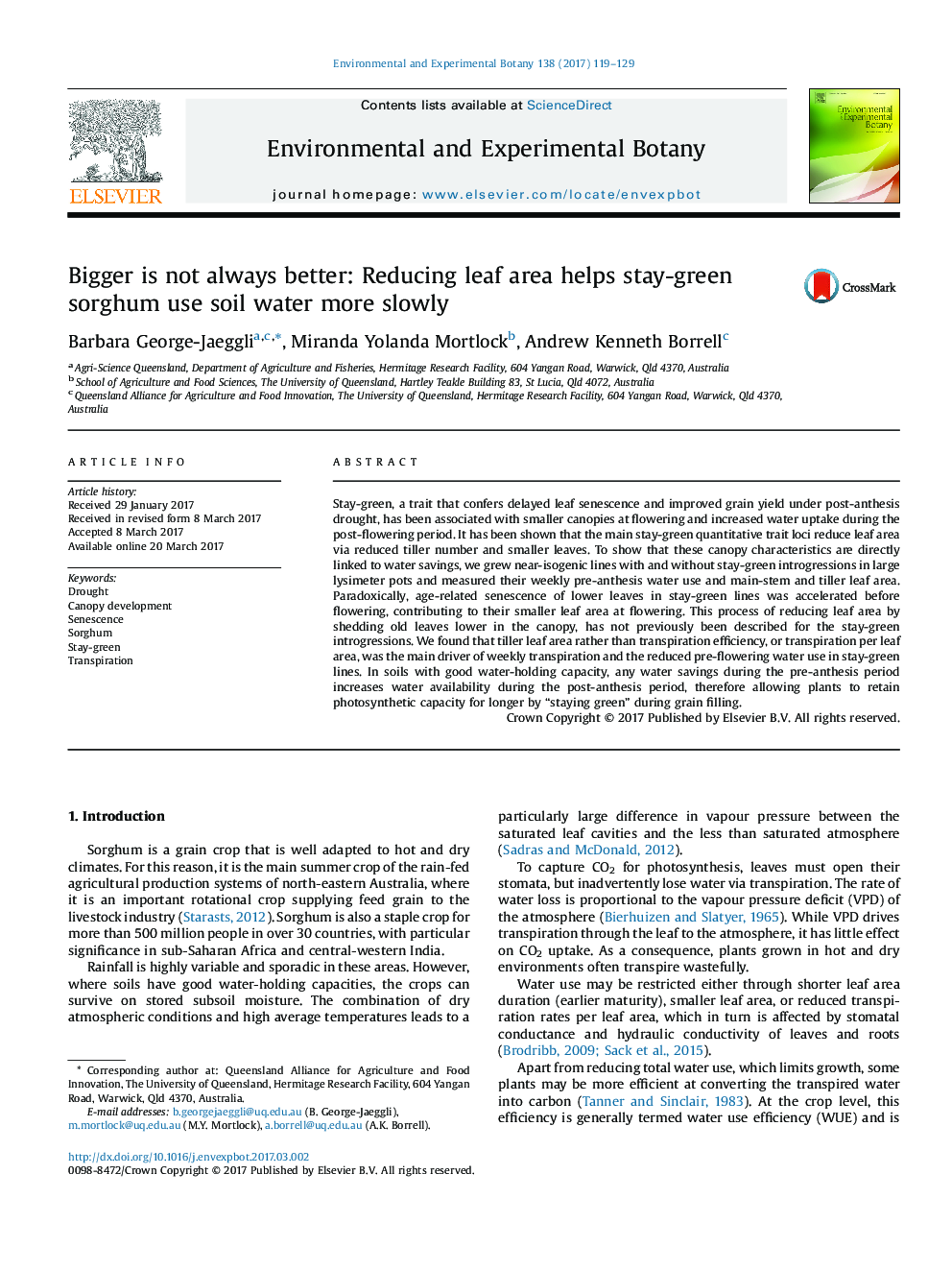| Article ID | Journal | Published Year | Pages | File Type |
|---|---|---|---|---|
| 5766669 | Environmental and Experimental Botany | 2017 | 11 Pages |
Abstract
Stay-green, a trait that confers delayed leaf senescence and improved grain yield under post-anthesis drought, has been associated with smaller canopies at flowering and increased water uptake during the post-flowering period. It has been shown that the main stay-green quantitative trait loci reduce leaf area via reduced tiller number and smaller leaves. To show that these canopy characteristics are directly linked to water savings, we grew near-isogenic lines with and without stay-green introgressions in large lysimeter pots and measured their weekly pre-anthesis water use and main-stem and tiller leaf area. Paradoxically, age-related senescence of lower leaves in stay-green lines was accelerated before flowering, contributing to their smaller leaf area at flowering. This process of reducing leaf area by shedding old leaves lower in the canopy, has not previously been described for the stay-green introgressions. We found that tiller leaf area rather than transpiration efficiency, or transpiration per leaf area, was the main driver of weekly transpiration and the reduced pre-flowering water use in stay-green lines. In soils with good water-holding capacity, any water savings during the pre-anthesis period increases water availability during the post-anthesis period, therefore allowing plants to retain photosynthetic capacity for longer by “staying green” during grain filling.
Related Topics
Life Sciences
Agricultural and Biological Sciences
Ecology, Evolution, Behavior and Systematics
Authors
Barbara George-Jaeggli, Miranda Yolanda Mortlock, Andrew Kenneth Borrell,
